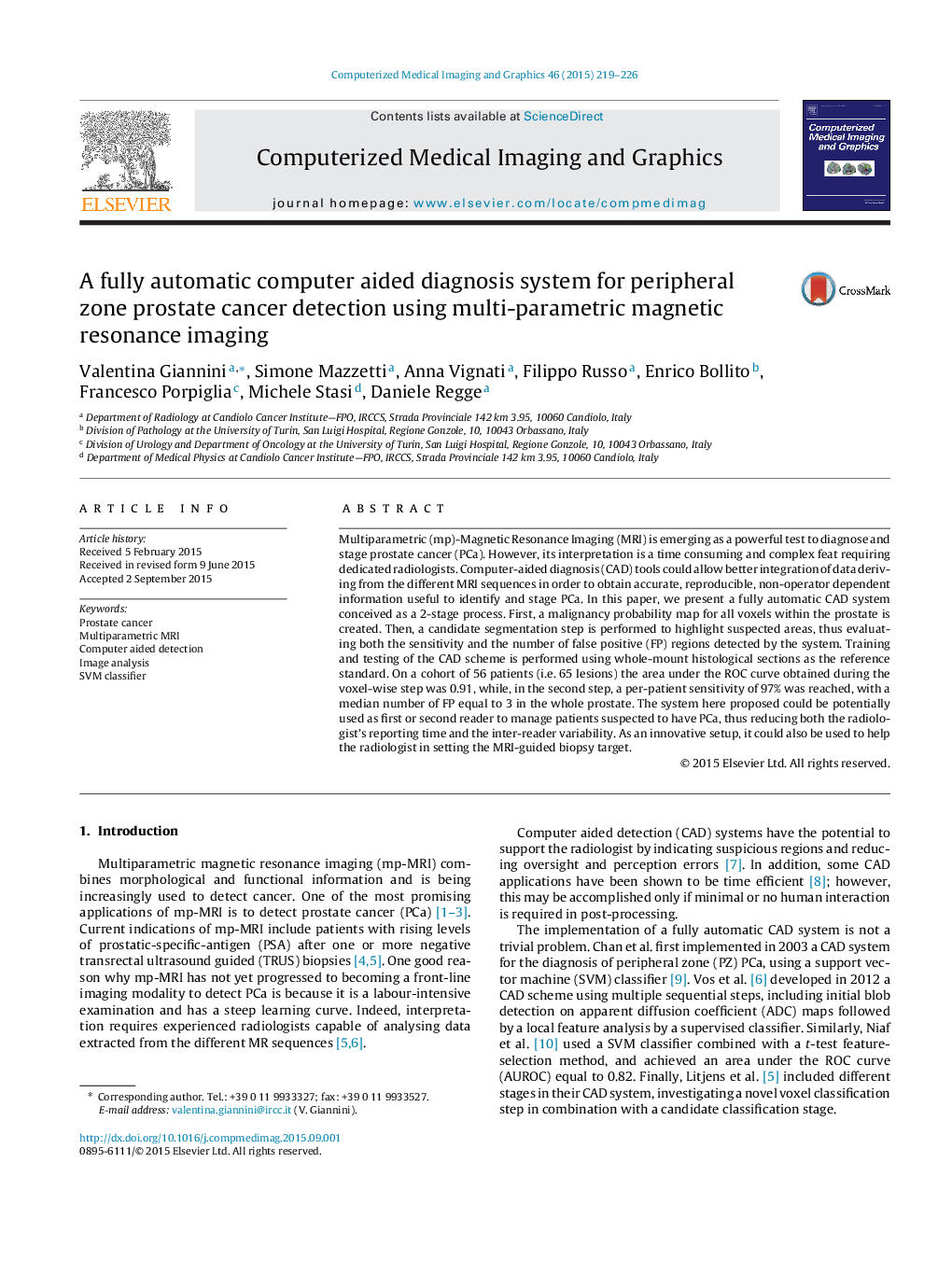| Article ID | Journal | Published Year | Pages | File Type |
|---|---|---|---|---|
| 504013 | Computerized Medical Imaging and Graphics | 2015 | 8 Pages |
•A fully automatic CAD system is presented to detect prostate cancer using MRI.•The reference standard was established using whole-mount pathological slices.•A registration step was included to align MR datasets.•The area under the ROC curve is 0.89 in discriminating normal from malignant voxels.•A per-patient sensitivity of 97% is reached, with a median number of FP = 3.
Multiparametric (mp)-Magnetic Resonance Imaging (MRI) is emerging as a powerful test to diagnose and stage prostate cancer (PCa). However, its interpretation is a time consuming and complex feat requiring dedicated radiologists. Computer-aided diagnosis (CAD) tools could allow better integration of data deriving from the different MRI sequences in order to obtain accurate, reproducible, non-operator dependent information useful to identify and stage PCa. In this paper, we present a fully automatic CAD system conceived as a 2-stage process. First, a malignancy probability map for all voxels within the prostate is created. Then, a candidate segmentation step is performed to highlight suspected areas, thus evaluating both the sensitivity and the number of false positive (FP) regions detected by the system. Training and testing of the CAD scheme is performed using whole-mount histological sections as the reference standard. On a cohort of 56 patients (i.e. 65 lesions) the area under the ROC curve obtained during the voxel-wise step was 0.91, while, in the second step, a per-patient sensitivity of 97% was reached, with a median number of FP equal to 3 in the whole prostate. The system here proposed could be potentially used as first or second reader to manage patients suspected to have PCa, thus reducing both the radiologist's reporting time and the inter-reader variability. As an innovative setup, it could also be used to help the radiologist in setting the MRI-guided biopsy target.
